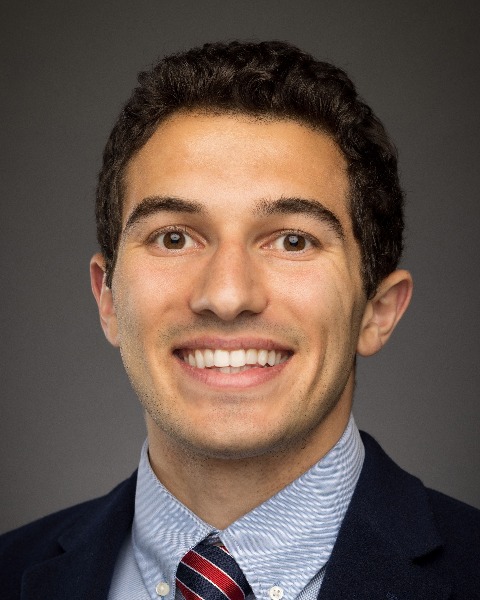Original Research
Program: Section on Administration and Practice Management
P4.007: Financial Wellness in Pediatrics: A Fair Isaac Corporation (FICO) Score Cross-Sectional Analysis of United States Trainees and Attendings
Monday, September 29, 2025
12:00 PM - 2:00 PM MDT
Location: Colorado Convention Center, Four Seasons Ballroom 1 & 2
Background: The average cost for tuition, fees, and living expenses at 50% of United States medical schools exceeds $275,000. In addition, a career in pediatrics requires 3 years of residency training and sometimes an additional 3 years of fellowship training at a fraction of their projected income. Virtually no data exists on the credit profiles of pediatric borrowers and the reasons for their borrowing. In the first analysis of its kind, we assessed the credit profiles of physician borrowers by FICO score, training or career stage, and reasons for borrowing.
Methods: This cross-sectional study was based on pooled FICO scores from 86 pediatric trainees and 172 attending borrowers from 2019-2023 sourced from a privately held physician and dentist financial services company in compliance with the Equal Credit Opportunity Act (ECOA). Borrowers applied for loans from October 1, 2019 to May 31, 2023. Descriptive analyses were performed characterizing the median borrower FICO score based on status (trainee vs. attending) and reasons for loan requests. FICO score excludes age, employment history, gender, location, income, marital status, national origin, and race to protect customers from potentially discriminatory credit decisioning. The FICO score pulls data from the three credit bureaus (Equifax, Experian, and Transunion) weighing the following categories when being calculated: payment history (35%), amounts owed (30%), length of credit history (15%), recent credit applications (10%), and credit mix (10%).
Results: The national median FICO scores were 661 (n=86; IQR=636-700) among trainees and 741 (n=172; IQR=699-774) among attending physicians (p < 0.001). Credit card consolidation was the most common reason for borrowing across both cohorts followed by moving/relocation among trainees and home improvement among attendings.
Conclusion: The significant difference between trainees and attendings is reasonable given the difference in compensation and ability to pay down debt between trainee and attending physicians. Interestingly, the median FICO scores of trainees is 30 points lower than the average American of their generation, while for attendings, the median FICO score is 14 points higher. This can be reassuring for younger trainees concerned about the financial considerations of pursuing a career in pediatrics given ongoing dialogue about reimbursement disparities with adult medicine attendings. This is meaningful as financial stresses reflected in FICO score can contribute to broader physician burnout and further the cycle of stress and shortage.
Methods: This cross-sectional study was based on pooled FICO scores from 86 pediatric trainees and 172 attending borrowers from 2019-2023 sourced from a privately held physician and dentist financial services company in compliance with the Equal Credit Opportunity Act (ECOA). Borrowers applied for loans from October 1, 2019 to May 31, 2023. Descriptive analyses were performed characterizing the median borrower FICO score based on status (trainee vs. attending) and reasons for loan requests. FICO score excludes age, employment history, gender, location, income, marital status, national origin, and race to protect customers from potentially discriminatory credit decisioning. The FICO score pulls data from the three credit bureaus (Equifax, Experian, and Transunion) weighing the following categories when being calculated: payment history (35%), amounts owed (30%), length of credit history (15%), recent credit applications (10%), and credit mix (10%).
Results: The national median FICO scores were 661 (n=86; IQR=636-700) among trainees and 741 (n=172; IQR=699-774) among attending physicians (p < 0.001). Credit card consolidation was the most common reason for borrowing across both cohorts followed by moving/relocation among trainees and home improvement among attendings.
Conclusion: The significant difference between trainees and attendings is reasonable given the difference in compensation and ability to pay down debt between trainee and attending physicians. Interestingly, the median FICO scores of trainees is 30 points lower than the average American of their generation, while for attendings, the median FICO score is 14 points higher. This can be reassuring for younger trainees concerned about the financial considerations of pursuing a career in pediatrics given ongoing dialogue about reimbursement disparities with adult medicine attendings. This is meaningful as financial stresses reflected in FICO score can contribute to broader physician burnout and further the cycle of stress and shortage.

Peter A. Palumbo
Medical Student
Geisel School of Medicine at Dartmouth
Lebanon, New Hampshire- WS
Wael Saasouh, MD
Clinical Assistant Professor
Wayne State University

